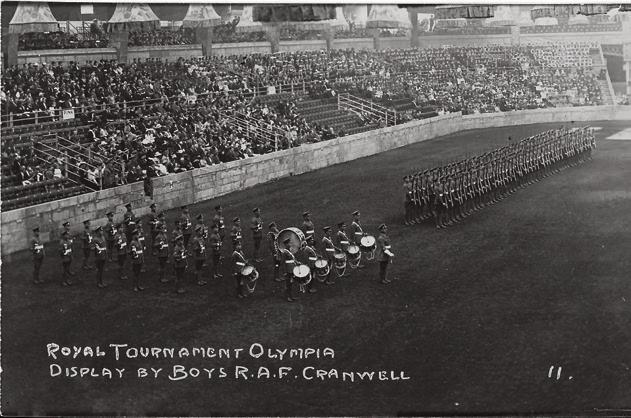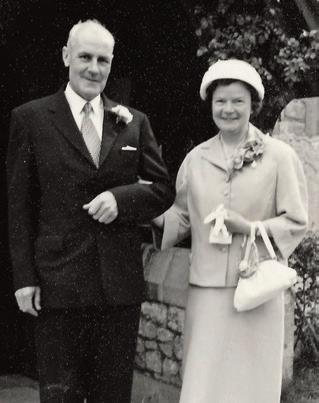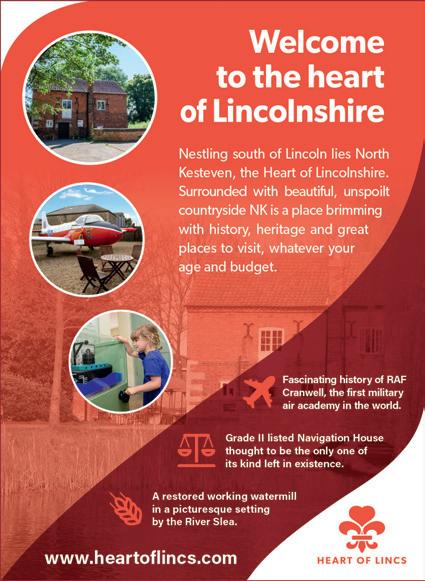
11 minute read
A TRENCHARD BRAT A collection
A Trenchard Brat In the Heart of Lincolnshire
100 years ago this month, Herbert ‘Tom’ Tomlin enlisted at RAF Cranwell. The station was just four years old, and Herbert was only ten years older than that. The plucky lad had heard stories of bravery and heroism from the Great War, not least tales of those ‘magnificent men in their flying machines.’ This month the Cranwell Aviation Heritage Museum reveals the story of the ‘Trenchard Brats,’ with a brand new collection of items which tell the story of Herbert’s life in RAF Cranwell Boys’ Wing...
Advertisement
Words & Images: Rob Davis & Tony Barron with material from NKDC; www.heartoflincs.com.
NOTHING IS MORE IMPORTANT to a story than a great main character. And when it comes to recounting the story of the RAF Cranwell’s ‘Boys’ Wing,’ Herbert Tomlin, ‘Tom’ is certainly a brilliant lead role.
Exactly 100 years ago, the young lad signed up to the Airport Apprentice Scheme (AAS); a role created by Hugh Trenchard. He was a man so RAF that even his stiff upper lip had a stiff upper lip of its own.
The First Viscount Trenchard was born in 1879 and had served in the Boer War, before being appointed Officer Commanding of the Royal Flying Corps. The latter would be amalgamated with the Royal Navy Air Service to become the RAF in 1918, just after the worth of air combat had been proven in the First World War.
Aircraft engineers, Trenchard came to realise, were thin on the ground – pun intended – and so to keep Britain flying, the newly appointed Chief of the Air Staff needed a good supply of well-educated boys who could apply the necessary intellect and technical proficiency to aviation-centric engineering challenges – for instance, aircraft electrical systems, creating interrupter mechanisms to synchronise firing through propellers, and of course, designing aerodynamic air frames.
Trenchard created an Aircraft Apprentice Scheme, which was originally due to be based at RAF Halton, though a lack of suitable accommodation meant it was first based at RAF Cranwell instead, opening in 1920. Though a second ‘Boys’ Wing’ also opened in 1922 at RAF Halton, Cranwell’s AAS remained at Cranwell until 1952 before being transferred to RAF Locking.
And so, our hero, Tommy Tomlin, was one of the first recruits of the AAS, which would come to be known by the soubriquet of ‘Trenchard’s Brats...’ in Lincolnshire, incidentally, they were also known as The Poacher’s Brats. The Scheme was a three year commitment for boys between 15 and 17 and a half. Legal guardianship in loco parentis was assumed by the RAF and entrance involved rigorous exams, intelligence tests and also medical examinations.
Trenchard would address himself to Tom and the rest of the first intake thusly; “I’m Hugh Trenchard and you’re who work hard.” Thankfully the education was better than the comedy, and among the AAS’s graduates was one Frank Whittle.
The creator of the jet engine, Whittle passed the entrance exam in 1923 at RAF Halton, but at just five feet tall and with a bit of a puny build, lasted just a couple of days. Whittle was undeterred and embarked on a serious exercise regime, and after a second rejection, applied a third time, this time at RAF Cranwell and under an assumed name. Whittle apparently hated the discipline, even considering desertion, but his Commanding Officer admired the model aircraft that he created and acknowledged his mathematical genius, recommending him for Officer Training at Cranwell in 1926... perhaps a neat example of how the meek can inherit the Earth. Safe to say that decision was a good one, for were it not for the faith that the OC demonstrated, we may never have had the jet engine, which was invented by Whittle! Meanwhile, back to Tom. After enlistment into the training establishment, the ‘Boys’ were divided into two sections. They would then be trained on many graded courses, beginning with elementary work, and passing out once tasks within the sphere of their particular trade had been achieved. The boys were also required to sit all their written examinations in a number of subjects including the sciences, mathematics, English and technical drawing. In 1921, Herbert was part of the Boys’ Wing contingent that paraded at the Royal Tournament at Olympia, London. This was clearly a memorable event for him, as aside from photos, Herbert collected numerous newspaper clippings relating to the event, as well as a well-thumbed copy of the Tournament’s programme, inside which was his own personal souvenir of the pageant.
These documents form part of the collection of material that Tom’s nephew Tony Barron, has collated and looked after. >>
>> Tony has recently donated the collection to the Cranwell Aviation Heritage Museum which has included it as part of its collection of material on display to tell the story of the AAS.

From the same era, Herbert’s photo album includes images of RAF Cranwell’s original Fire Brigade and other images of buildings and aircraft at Cranwell as of 1922. Herbert was promoted to Aircraftman First Class in December 1922. Three years later he was promoted to Leading Aircraftman (LAC).
In August 1927, Herbert was promoted again, this time to Corporal, and then in June 1933, he was promoted to Sergeant. Five years later to the day he was promoted a final time to the rank of Flight Sergeant.
On 24th September 1941, Tomlin was also Mentioned in Dispatches (MiD) for ‘distinguished service’ although this is for reasons he did not discuss. In 1947, after completing 27 years of service, then WO, Tomlin was discharged from the RAF.

Following his release from the RAF, the now ‘Mr’ Tomlin was employed as a senior aircraft inspector at the Royal Naval Air Yard, Fleetlands in Gosport.
Herbert married rather late in life at the age of 53. Tony had just returned from National Service in West Africa and was privileged to be the best man at Herbert’s marriage to Phyllis. Over the following decades, Herbert attended at least three RAF reunions, the first in 1970, the last in 1985.
In 1970, Herbert attended RAF Halton’s Golden Jubilee celebrations and it’s no surprise that he purchased and saved a copy of the souvenir magazine.
Two further reunions took place in September 1980, when Herbert attended the 60 year reunion of the Boys’ Wing at RAF Cranwell. Herbert retained three photographs from the event; a group photograph, the Boys’ Wing on parade and the presentation of a

This Page: A Super Handley Page aircraft c.1922; In 1921, Herbert was part of the Boys’ Wing contingent that paraded at the Royal Tournament at Olympia, London; Cranwell’s Fire Brigade 1922. Opposite: Herbert c.1925; Herbert marries Phyllis in 1958. Herbert at 85 years of age.
rose bowl by the 1920 Boys’ Wing, displayed in Trenchard Hall Officers’ Mess.
Five years later he was back at Cranwell, this time accompanied by Tony, attending the 65 years-on reunion of the Boys’ Wing at RAF Cranwell. By this time, the ‘Boys’ attending were in their early eighties. Sadly, Herbert’s wife had also predeceased him in 1984.
Herbert lived on until 1990 and died aged 86. His obituary entitled ‘Death of a Trenchard Brat’ was published in the Southern Echo, on 12th December 1990, and it’s not known if any further Boys’ Wing reunions took place after the one held in 1985.

100 years on exactly from Herbert enlisting in the RAF, Tony has ensured that the huge collection of documents, photographs, newspaper clippings and other material collected by Herbert is available for all to see, with an online exhibition now visible and more material at Cranwell Aviation Heritage Museum which can be enjoyed once Covid restrictions are listed.
Many of the items donated are specific to RAF Cranwell and its Boys’ Wing, others provide a more general background of the RAF’s early history.
Cataloguing the items, say the museum’s curators, has made for fascinating reading regarding the life of a man – or indeed ‘Boy’ – who joined the RAF in 1920 and who, 65 years later, was still attending events along with former colleagues commemorating their RAF service. Once Cranwell Aviation Heritage Museum resumes its normal opening hours, it is envisaged that many more of the items relating to Herbert, and indeed items relating to the Boys’ Wing from the collection, will be on public display at the museum. n

n Our article utilises material from Herbert’s archive, donated to Cranwell Aviation Heritage Museum by Tony Barron. The museum is operated by North Kesteven District Council, and is based at Heath Farm, North Rauceby, Sleaford NG34 8QR. Call 01529 488490 or see www.heartoflincs.com/cranwell. North Kesteven’s other attractions include Mrs Smith’s Cottage, Cogglesford Mill and Navigation House.

Did you know, one in four people experiences mental health issues each year? In the UK, mental ill health is responsible for 72,000,000 working days lost and costs employers £34.9bn each year...

What is Mental Health First Aid? Mental Health First Aid (MHFA) is an internationally recognised training course which teaches people how to spot the signs and symptoms of mental ill health and provide help on a first aid basis. MHFA won’t teach you to be a therapist, but just like physical first aid, it will teach you to listen, reassure and respond, even in a crisis. Adult MHFA courses are for everyone aged 16 upwards. Every MHFA course is delivered by a quality assured instructor who has attended our Instructor Training programme accredited by the Royal Society for Public Health, and is trained to keep people safe and supported while they learn. Why Choose LIVES? Choosing LIVES to supply your Mental Health First Aid course will allow you to further your mental health awareness, help someone in need and promote positive mental health in the work pace. You will also help promote our passion for sharing knowledge and increasing awareness and allowing people to speak openly about their mental health. You would care for someone with physical first aid needs, why not mental health needs?
To find out more or to discuss your needs contact us on 01507 525999 or book online at www.lives.org.uk/training/mental-health-first-aid
3REASONS WHY EVERY EMPLOYER SHOULD INVEST IN STAFF MENTAL HEALTH.


Retain Skills By Reducing Staff Turnover: Almost one third (31%) of staff said that they would consider leaving their current role within the next 12 months if stress levels in their organisation did not improve.
Reduce Costs: The annual cost of mental health-related presenteeism (people coming to work and underperforming due to ill health) is £15.1 billion or £605 per employee in the UK.
Cut Sickness Absence: Mental health issues such as stress, depression or anxiety account for almost 70 million days off sick per year, the most of any health condition, costing the UK economy between £70-£100 billion per year.

LIVES Launches its New Cookbook
LIVES First Responders are used to providing rapid help and peace of mind for Lincolnshire communities. Now the charity can help you create something delicious with equal expedience. The charity has cooked up an amazing new book packed with local recipes, enlisting chef Darren Rogan, photographer David Harrison and Epix media to work on their project...

Words: Rob Davis.
PATIENCE, THEY RECKON, IS A VIRTUE. Sadly it’s not a virtue with which magazine editors are blessed. Always on deadline, we want everything yesterday and we’re eternally over-eager. Chefs, by contrast, recognise that their best dishes are those in which time has been invested; ones that have been cooked slowly, gently, with labour lovingly expended in their preparation.
It’s the same with bread. By chance my socially distanced phone call is well-timed. Darren Rogan is baking a batch of his signature charcoal bread, which he serves with Poacher cheese-flavoured butter. “I’ve got time to talk – all the time in the world – the bread’s proving, so the longer I leave it the better… it’s time well-invested” he points out.
Being a chef patience comes naturally, but even the Hykeham pan-rattler has his limits, and with fewer people to cook for during lockdown, Darren needed a creative outlet.
Unusually, the chef doesn’t have his own restaurant. Instead, he’s cleverly created a niche, cooking in his clients’ own homes. He had two or three clients a week prior to lockdown, whereupon the ‘rule of six’ put a temporary culinary kibosh on households mixing.
Keen to cook but with no outlet for his culinary talent, Darren decided to put his pans to good use and has, instead, worked with the Lincolnshire first responder charity LIVES to create a cookbook to raise money for the service. It’s out now and features not only some of the chef’s greatest recipes, but local suppliers too… a good meal, for a good cause, using good ingredients? What’s not to love?
Darren began his career in Lincoln, the son of an RAF officer. He attended North Kesteven Academy and enjoyed gainful employment in his youth as a potwash at The Wig & Mitre on Steep Hill before working as an apprentice chef and later becoming Sous Chef. Later his career saw him working as Sous Chef at seafood and Champagne restaurant Épernay and a number of other local restaurants before he joined The Tower Hotel as a Sous Chef, before being promoted Head Chef in 2010 and earning the restaurant a rosette in 2012.
Later working as a consultant to restaurants and as a freelance chef, Darren initially wanted to own his own restaurant, but instead, gravitated towards his current interest, creating private dining experiences in his clients’ own homes. >>










